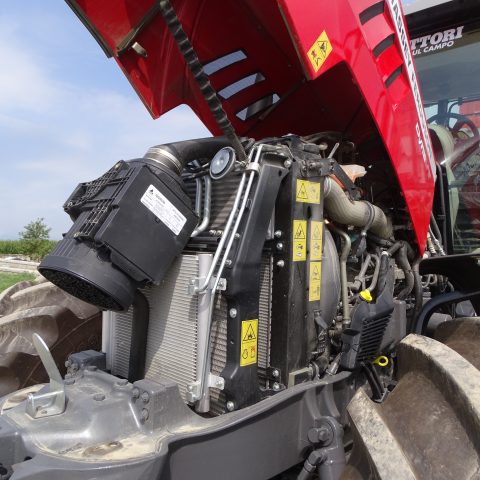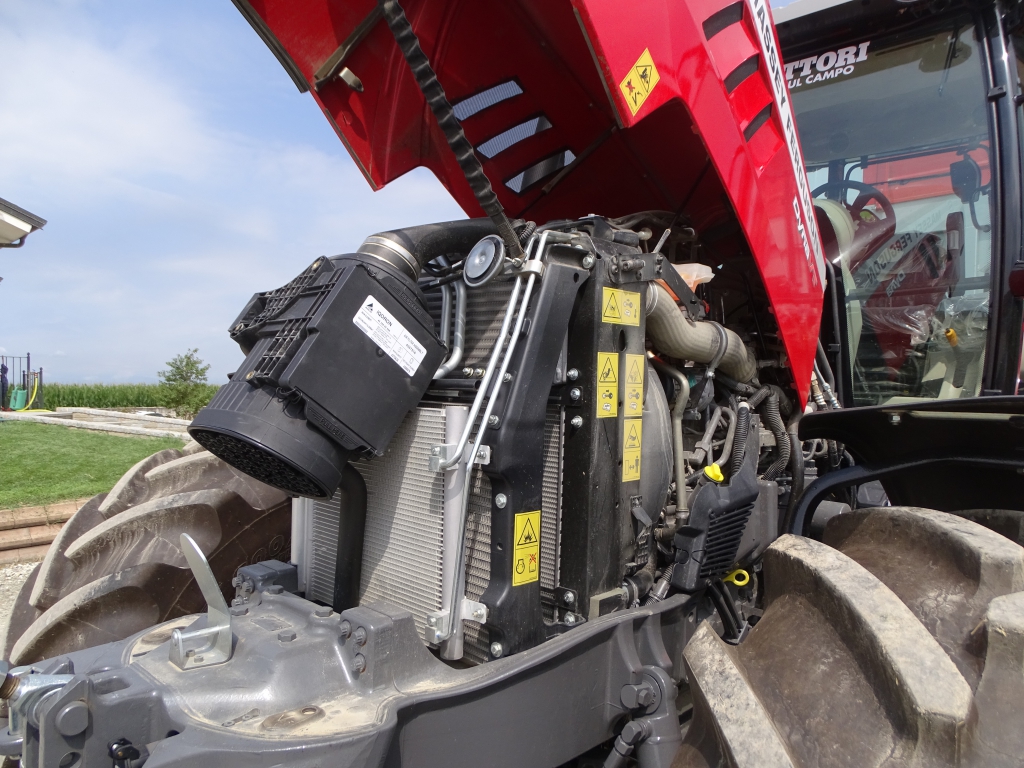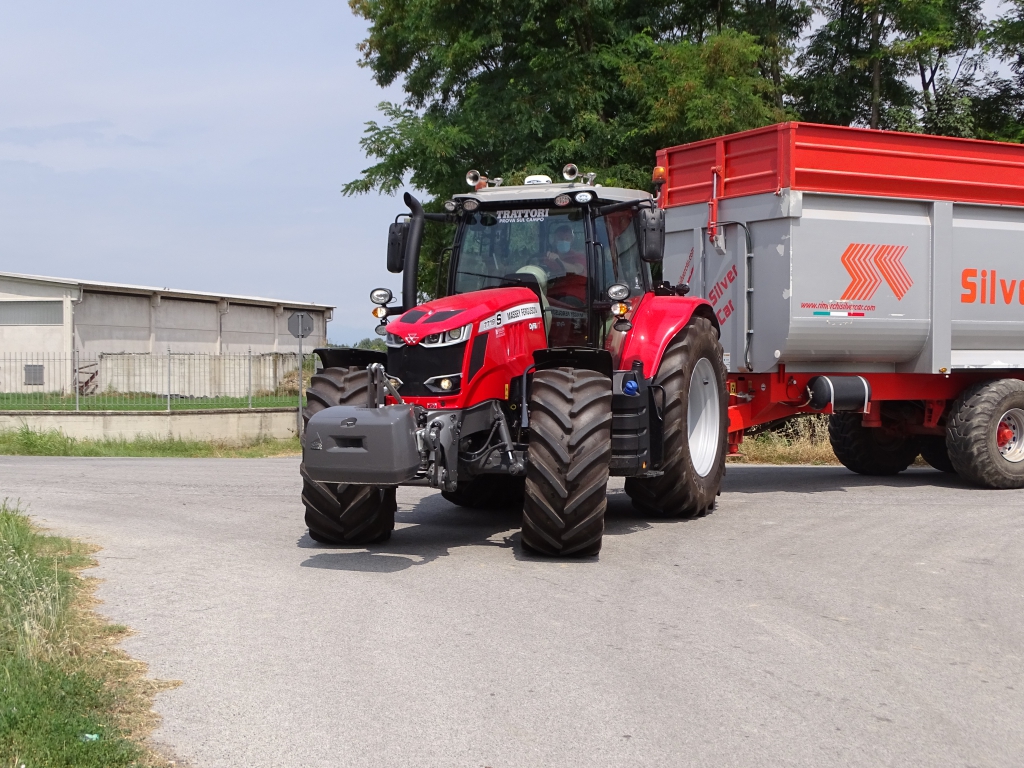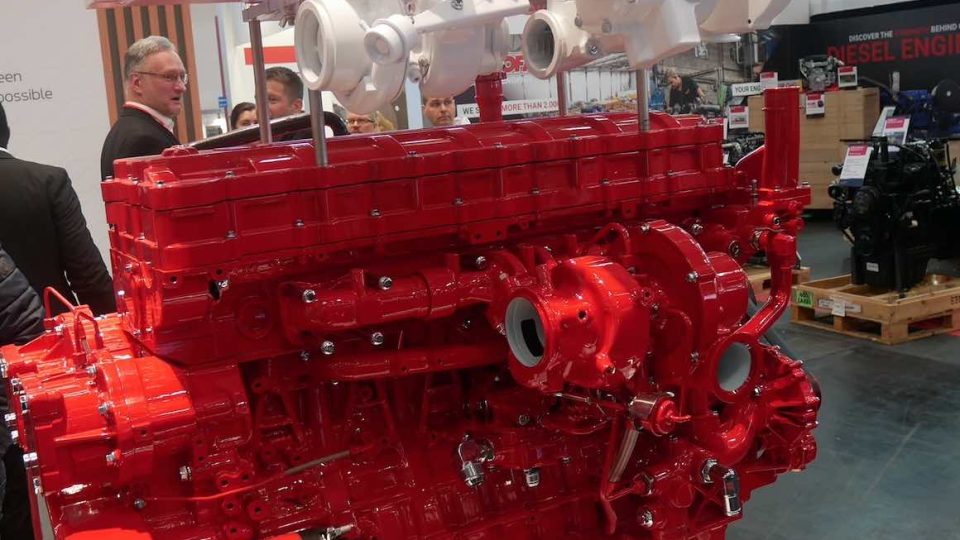Agco Power is captive. And Massey Ferguson agrees
AGCO Power captive, a dominant attitude since former SISU was incorporated into the AGCO Group ecosystem. An example is the Massey Ferguson 7719S Dyna-VT, equipped with the AGCO Power 66Hd, the 6-cylinder 1.1-litre cylinder displacement (BxS 108x120mm), with 140 kW at 1,950 rpm and 865 Nm available at 1,500. Engine power management (the electronic system that […]

AGCO Power captive, a dominant attitude since former SISU was incorporated into the AGCO Group ecosystem. An example is the Massey Ferguson 7719S Dyna-VT, equipped with the AGCO Power 66Hd, the 6-cylinder 1.1-litre cylinder displacement (BxS 108x120mm), with 140 kW at 1,950 rpm and 865 Nm available at 1,500. Engine power management (the electronic system that controls the engine and transmission) can increase power to 162 kW to cope with load variations during transportation and when the hydraulics or PTO are activated. In the same way it gives extra torque from 88 to 923 Nm.

AGCO Power is captive, together with Massey Ferguson
Like a boxer who drops in weight to get out of his category and make better use of the power of his fists, the Massey Ferguson 7719S in Stage V version undergoes an iron ‘slimming diet’ placing itself at the top of the four models in the 7700S series with a short wheelbase in order to make the most of a more favourable weight/power ratio, gaining in agility and versatility. Introduced in the range at the beginning of 2019, it therefore has a wheelbase of 2,880 millimetres and stops the scale at 6,300 kilos when empty, all to the benefit of the versatility required of modern medium/high class tractors. Without sacrificing the sturdiness of its long wheelbase brothers (the 14 tons of gross weight is proof of this), the 7719S can thus boast better manoeuvrability and make the transition from transport to heavy field operations with ease.
Machine design under the spotlights

Compared to the old 7719 (the one still without ‘S’ to be precise, i.e. ante Mother regulation), the ‘slimming care’ for the 7719S has led to a shortening of the wheelbase from 3 to 2.88 metres and a reduction in weight of 850 kilos. The structure, however, remains sturdy, with the cast iron half frame embracing the engine and the integrated front linkage. The maintenance-free Quadlink suspended front axle combines the action of two cylinders and three accumulators to ensure optimum adaptation of the damping system to different operating conditions. The engine is practically the same 6.6-litre 6-cylinder engine as the Stage IV version, with the exhaust after-treatment system changing, which in addition to the SCR and DOC, sees the addition of the so-called ‘Soot catalyst’ or unburnt catalyst (SC), which in practice performs the functions of a particulate filter but with less impact on engine economy. The SC works under the control of the engine ECU, which, depending on the pressure and temperature conditions within the SC itself and the application and load parameters of the engine, automatically starts the regeneration process. When the engine is under load, the exhaust gas is already warm and the particulate matter burns naturally. When the engine is not under load, the Ecu increases the temperature inside the SC by raising the temperature in the cylinders with different maps for the pre and post-injection phases and by managing the air flow at the inlet with the throttle valve. This system therefore does not use an additional injector to increase the temperature inside the exhaust pipe and therefore does not consume extra fuel during regeneration. All DOC, SCR and SC components are designed to last the entire life of the tractor and are maintenance-free. All three are placed in a special compartment outside the bonnet, under the exhaust pipe, which has a very small diameter and does not obstruct the operator’s view in any way.
The DYNA-VT transmission
The Dyna-Vt transmission can be used in Hare range, where the angular variations of the hydrostatic component are maximised to reach 50 kilometres per hour, or in Tortoise range, where the hydrostatic component is limited to favour higher mechanical efficiency and respond more efficiently to the high loads typical of heavy field work. Load management is entrusted to the DTM, which independently regulates the engine performance in relation to the transmission load to keep the feed speed constant, or, in PTO work, to give priority to engine revs.









